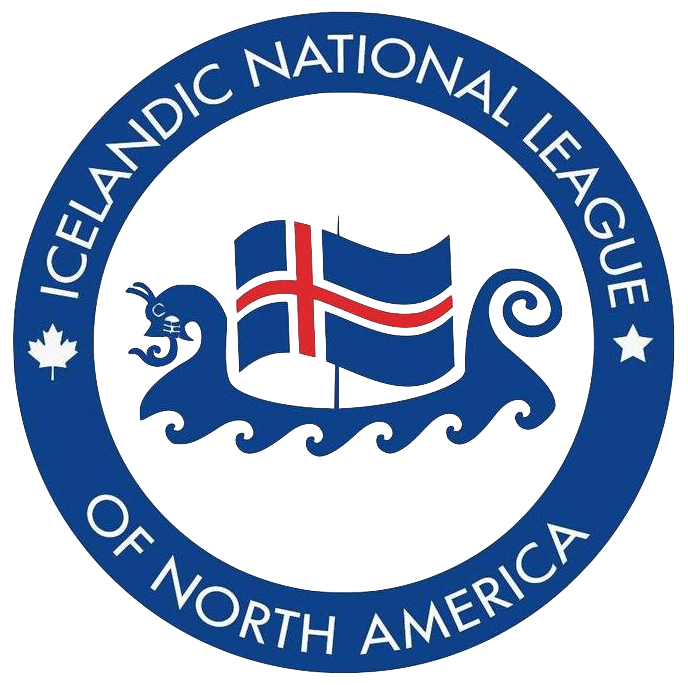Arinbjorn Sigurgeirsson Bardal
(1866-1951)
Father and sons. Karl, Njall, Arinbjorn, Paul, Gerard
Arinbjorn Sigurgeirsson Bardal was born on April 22, 1866 in Svartarkot, Bardardalur in the north of Iceland. His father was Sigurgeir Palsson of Grimstadur and his mother Vigdis Halldorsdottir of Bjarnstadur in Bardardalur.
At the age of eight, Arinbjorn started his life as a shepherd, but only during the summer months. At age twelve he took on the responsibility all year round. His education was very limited. In his twelfth year, while confined for two months with a boil on his neck, the visiting priest taught him to read and write. In the summer of 1884, at age eighteen, he went south to Akranes to work on a fishing boat but had to leave the ship in Reykjavik as he suffered so badly from seasickness. There he worked unloading coal.
After his mother died in 1886 Arinbjorn managed to borrow money to pay his way to Canada. His brother Paul, who been in Canada for eight years, took him into his home along with his sister Asdis and her husband and family who had travelled with him from Iceland. He worked for the Canadian Pacific Railroad laying track and managed to pay back the money he had borrowed.
Arinbjorn went on to work at various jobs. He worked for the Hudson Bay railroad, dug sewers in Winnipeg for seventy cents a day, and unloaded coal in Fort William, Ontario for twenty-five cents an hour. But after several ill-paid and dangerous jobs he found employment on a farm in Carberry, Manitoba with a Mr. Boyd. He enjoyed the fourteen months working with English-speaking men. He became foreman over the hired hands and perfected his English.
Feeling there was no future working on the farm, he took up several more jobs before the winter came, including driving a wagon for Mr. B.S. Lindal, who had a wood and coal hauling business. Mr. Lindal offered to sell him the business. The Unitarian minister, Bjorn Petursson, and his wife loaned him $200 to buy it. He enjoyed being self-employed and eventually entered the taxi-cab business. He was the first ambulance driver for the Winnipeg General Hospital.
In 1894, Arinbjorn sold his transport business and made a modest beginning in the funeral business. For many years, he and George Gardiner cooperated to save expenses. Gardiner owned a black hearse and Bardal, a team of black horses. For years, Bardal’s horses drew Gardiner’s hearse for both funeral homes.
For over fifty years until his death in 1951, Arinbjorn was active in his business, which continued under the care of his sons and grandson and now his great grandson, who owns another funeral home under the name of his father, Neil Bardal.
Arinbjorn was tirelessly devoted to the cause of the Order of Good Templars. He joined the Icelandic Lodge, Skuld, in 1889. He first took office in 1908 and was Grand Chief Templar for over 25 years. He represented Canada in the international deliberations of the I.O.G.T in Norway (1914), Denmark (1920), London (1923), Philadelphia (1927), Sweden (1930) and Holland (1933).
He was President of the First Lutheran Church (1919-1921) and the Manitoba Grand Master Manchester Unity of the I.O.O.F. in 1908.
He was Councilor of the Municipality of North Kildonan from 1926 until he moved to the city in 1942. During this time, he held the office of President of the Manitoba Funeral Directors Association for three years and took a keen and active part in all its deliberations.
In 1893 Arinbjorn married Sesselja Thorgeirsson. They had two daughters, Adalbjorg and Emilia. Emilia died in the fall of 1899 at the age of one-and-one-half years. His wife died a few months later of tuberculosis. This was devastating period in his life. He was remarried in 1900 to Margret Ingibjorg Olafsdottir and they had 14 children, three of whom died as infants. There were four sons, Njall, Karl, Gerard and Paul, and eight daughters: Adalbjorg (Alla), Emily, Svava, Osk, Signy, Helga, Margret and Agnes.
Their first home was 676 McDermot Avenue but in 1921 they moved to a large home on Hawthorne Avenue on the Red River in North Kildonan. There, Arinbjorn spent many happy hours boating, caring for his garden, pruning trees and trimming the long stretch of hedge that surrounded the property.
Living far from the city centre, people in need often came to the Bardal door for help with medical emergencies or for financial support. Arinbjorn had knowledge of practical medicine gained from his experiences growing up in such a remote area in Iceland and also from his training as an embalmer. He kept some letters dating back to the flu epidemic of 1918 and the 1930s Depression, thanking him for his help in times of distress, and even a letter from Iceland where, during a visit there, he was on hand to deliver a relative’s baby.
The summer cottage in Gimli, which Arinbjorn built in 1904, was thoroughly enjoyed by all of the family over the years.
Arinbjorn continued his activities as lawn bowler, curler, fisherman and hunter until well into his eighties. He was familiar with many of Manitoba’s lakes and rivers. He built himself a trailer equipped with a bed and stove, which allowed him to travel as he wished. He hunted deer, ducks and geese as the season allowed so the family was always well fed.
During the war years, when so many of the family had left home, Arinbjorn and Margret moved to an apartment above the Bardal Funeral Home where they spent the remainder of their lives. Arinbjorn passed away on November 13, 1951. Margret passed away on September 1, 1960.
Arinbjorn Sigurgeirsson Bardal was truly a rare and wonderful character, a loving father, a devoted husband and a caring, generous friend who was always ready to help anyone in need.
Agnes Bardal Comack
2014 04



